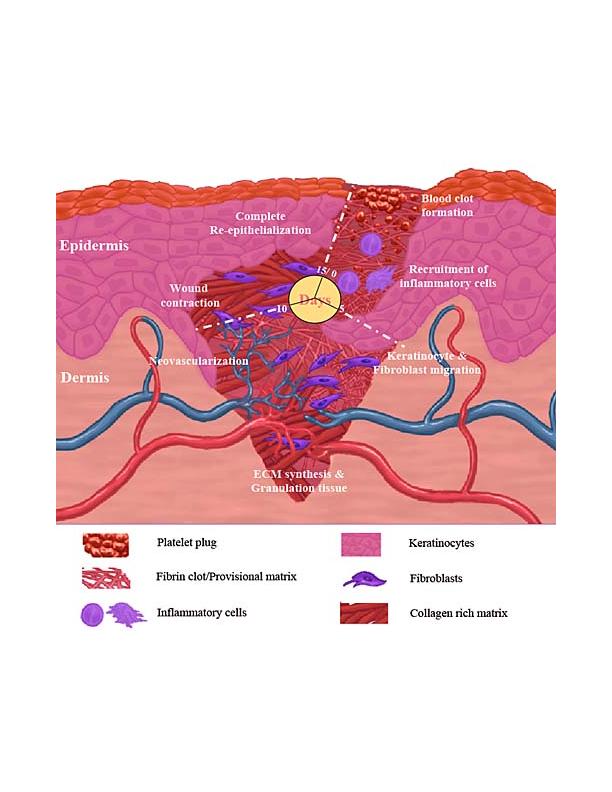Numerical
Analysis
Etelvina Javierre
Centro de Investigacion Biomedica en Red en Bioingenieria
Biomateriales y Nanomedicina (CIBER-BBN)
Group of Structural Mechanics and Material Modelling
Agustin de Betancourt Building
Maria de Luna 7
Campus Rio Ebro
University of Zaragoza
50018, Zaragoza
Spain
Presenter at Delft Symposium on Mathematical Modeling of Wound Healing

Date: October 15, 2009. Location Pegasuszaal (Pegasus Lecture Room),
Kluyverweg 6, Delft University of Technology, Delft, the Netherlands.
A computational study of the effect of stitching up incision wounds in the healing response
E. Javierre, P. Moreo, F.J. Vermolen, M. Doblare and J.M. Garcia-Aznar
Wound healing involves a large number of strongly coupled and highly complex processes ranging from debris and infectious matter removal to extracellular matrix remodelling, including angiogenesis, re-epithelialization, extracellular matrix synthesis and wound contraction (Clark 1989). In this work, we focus on the lasts two events above mentioned, which occur in a highly orchestrated manner during the formation of fibrous tissue. The synthesis of extracellular matrix is chemically triggered by the action of certain growth factors released during the inflammatory phase, whereas wound contraction is mechanically driven by the traction forces exerted by fibroblasts on the wound surroundings.
With this study we seek to analyze the healing response in incision wounds. For this reason, we consider the effects of wound opening, depth and application of stitches on the healing process.
To this aim, we present a mathematical model based on the work of Olsen et al. (1995) in which we incorporate the following known effects: a cell differentiation mechanical signalling (Ehrlich and Rajaratman 1990), a cell mechanical sensing and transmission of traction forces to the ECM (Moreo et al. 2008), and a dynamical change of the ECM mechanical properties with collagen deposition (Gomez-Benito et al. 2005).
A finite element analysis is used to solve the governing equations numerically. The highly nonlinear discrete system is solved applying the Newton-Raphson method with a strict linerarization of the internal and external forces.
References
R. A. Clark (1989), Curr. Opin. Cell Biol. 1(5):1000--1008
L. Olsen, J. A. Sherratt and P. K. Maini (1995), J. Theor. Biol. 177(2):113--128
H. P. Ehrlich and J. B. M. Rajaratnam (1990), Tissue Cell 22(4):407--417
P. Moreo, J.M. Garcia-Aznar, M. Doblare (2008), Acta Biomaterialia 4:613?621
M.J. Gomez-Benito, J.M. Garcia-Aznar, J.H. Kuiper, M. Doblare (2005), J. Theor. Biol. (235): 105--119.
Back to home page of Delft Symposium
Last modified: August 9, 2009, by Fred Vermolen
